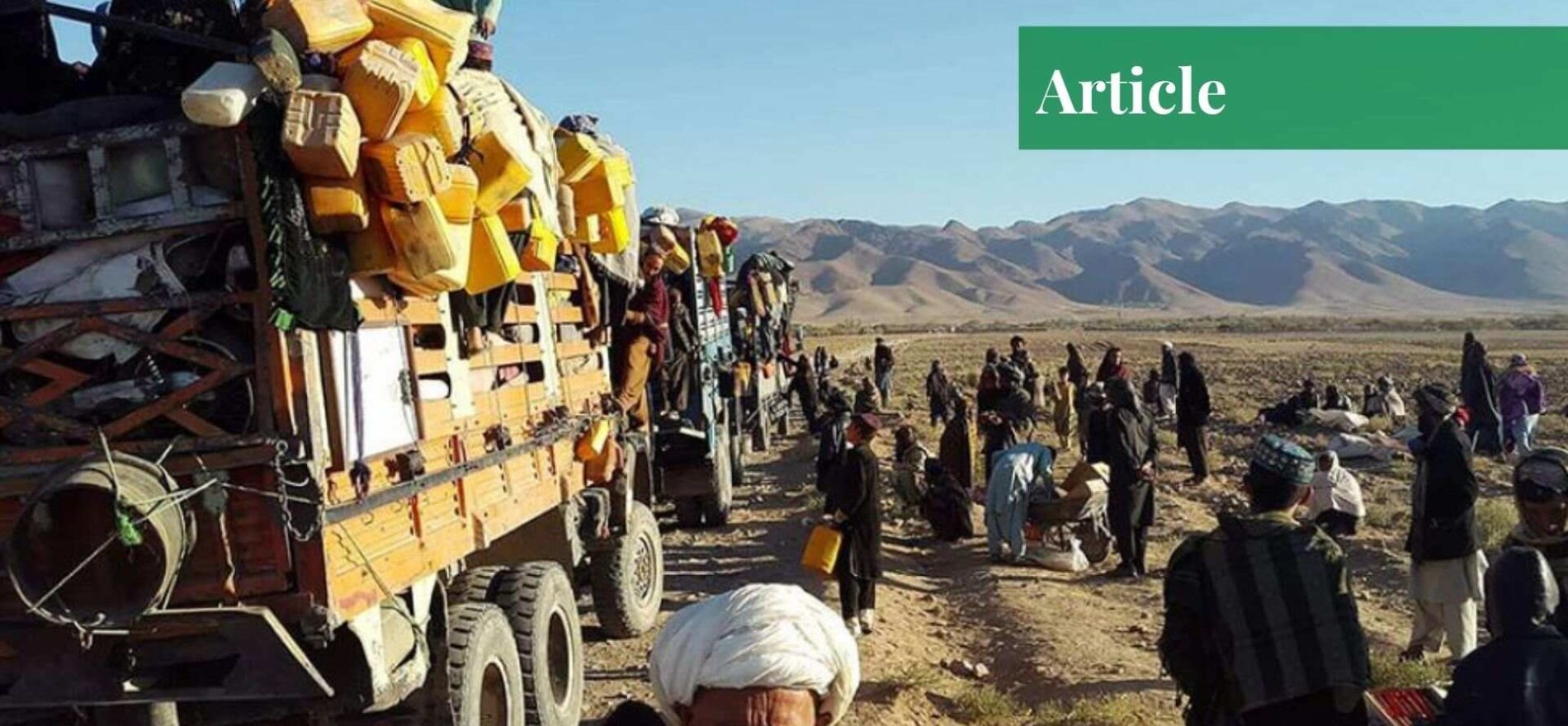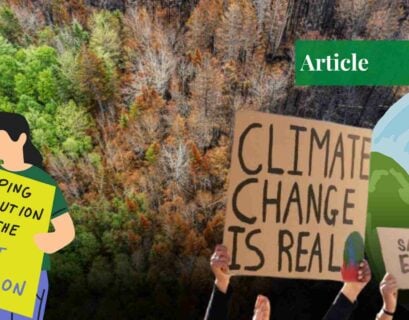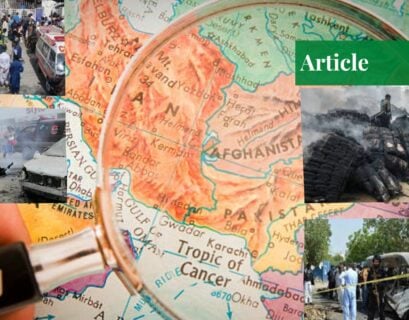Rooha Javed holds a master's degree in international relations and is currently performing a job as a visiting lecturer.
Climate-induced Migration
The word “migration” indicates several concepts that can happen under different circumstances, including climate change. For migration induced by climate change, like in the case of Afghanistan, terms such as an environment-displaced person, climate refugee, or environmental forced migration are often used as well. Climate-related changes and complexities have emerged since the Industrial Revolution, but they have become more evident in the 21st century due to calamitous events globally.
In 2018, 17.2 million new displacements, due to catastrophes, were registered in 148 countries and territories, with 764,000 people relocated due to drought in Somalia, Afghanistan, and numerous other countries. Furthermore, as the earth warms, people are forced to relocate. According to the World Bank, calamitous conditions can exacerbate to cause over 200 million people to flee by 2050 without immediate action.

According to international organizations, climate-induced migrants are defined as people who migrate from their habitual homelands due to abrupt changes in the environment outburst. Due to these climate change vulnerabilities, the migration rate rises from border to border as people flee to save their lives from severe catastrophic events.
However, the most common situations can be seen in the manifolds of rainfall patterns, the severity of temperature, precipitation, and other particular conditions in the climate change features. Moreover, these spillover effects by climate change further lead to poverty, human displacement, floods, economic instability, and non-traditional security threats. In addition to these effects, political instability, weak governance, and displacement also occur.
Since 2008, the extreme weather has forced approximately 21 million people to flee, while this data does not include those cases that have been affected by the sea level rise and desertification on the slow-growing climate impact. In 2020, data revealed that approximately 40.5 million people were displaced within their boundaries.
Climate, environmental deterioration, and disasters increasingly intersect with the drivers of refugee flows, according to the 2018 Global Compact on Refugees. Climate displacement and migration disproportionately affect nations that are least prepared to deal with the repercussions of climate change, exacerbating social, economic, and security difficulties, primarily in developing countries that have contributed the least to climate change.
Effects of Climate Change in Afghanistan
Afghanistan is highly prone to climate change effects in the world. In its case, several natural disasters—particularly droughts, avalanches, floods, and earthquakes—have been the main features of climate breakdown. Natural disasters with different intensities have also been recorded in different timespans, prominently from 1998 to 2006; these years are the utmost documented as the vulnerable years in Afghanistan.
It has also experienced the lowest rainfall annually during the rainfall season. Resultantly, significant declines have been observed, such as scarcity of water reserves, low-level river flows, low dam water levels, melted snow depths, and soil moisture erosion. In July 2018, the Famine Early Warning System published a report that showed 22 provinces of Afghanistan out of 34 experienced below the average rain and snowfall, approximately 30% to 60% only.
Consequently, these climate change patterns have also affected the agriculture sector of Afghanistan, causing a severe drought. On 8th July 2019, drought had significantly impacted the population migration inside Afghanistan, displacing 287,000 people mainly from the western and northern regions.
During the last few months, the rapid influx of more than a quarter-million people within the borders of Herat, the provincial capital, has resulted in the establishment of 19 vast and sprawling informal communities. Also, approximately 13.5 million people face insufficient food supplies; however, they need emergency assistance.
In late summer, Afghans fled the nation, and millions more were in need of humanitarian assistance. The International community devoted less attention to the country’s terrible drought, which shows no indication of abating.
Afghanis at Risk
Climatologists also suggest that Afghanistan saw the acute temperature rise to 1.8 degrees Celsius, twice the average temperature globally, from 1995 to 2010. Under global warming, about 38 million Afghanis live at the risk of eruption of climate hazards.
For decades, Afghanistan has undergone variation in rainfall, with most of the nation being dry and scorching for much of the year. By acknowledging the climate change vulnerabilities in Afghanistan, it is ranked eighth among the total of 170 countries, indicating the implications that have affected 59% of the population ensuingly.
As US and NATO soldiers departed Afghanistan, the country suffered its second significant drought in three years, resulting in the loss of 40% of the country’s crops, pushing more people towards forced migration. Farming communities of northern and western provinces are highly affected. Families were already struggling to put food on the table before the Taliban’s takeover of Afghanistan.

According to the World Food Programme (WFP), 14 million Afghans, or 35% of the population, are facing extreme food insecurity. By the end of the year, 3.2 million children under the age of five are likely to suffer from acute malnutrition. Funding constraints following the Taliban takeover have also impeded the aid-dependent state’s response to the problem. While the recent pledges are critical for alleviating extreme hunger, they fall well short of country requirements.
Forced Migration in Afghanistan
For centuries, Afghanistan has seen various complex forced migration and mobility relations, either on internal or transboundary levels. In this case, conflicts and security threats have become the cause of rising migration. Though the migration cycle varies into traditional or seasonal migration, permanent or cyclical migration patterns still continue in Afghanistan. These conventional and regular migrant movements have intertwined with one of the world’s most significant and longest-running displacement crises and refugee inflow.
The Internal Displacement Monitoring Centre’s 2020 Global Report on Internal Displacement distinguishes between those relocated due to disasters and those displaced due to violence. As of 31st December 2019, Afghanistan had 2,993,000 internally displaced persons due to conflict and violence, and 1,198,000 due to natural disasters, the highest figures on record.
With the Soviet invasion of Afghanistan in 1979, large-scale displacement began. By the end of 1990, more than six million individuals had sought safety outside of Afghanistan. Since 1994, persons leaving the Taliban’s control have been part of the refugee movement. According to the International Organization for Migration’s (IOM) Migration Profile for Afghanistan, approximately six million people returned to Afghanistan between 2002 and 2014, with the bulk coming from Pakistan and Iran.
Climate shocks have also played an influential role in population mobility in this displacement crisis. Assessing and analyzing the displacement and forced migration in Afghanistan, to determine the core reason, is challenging. There can be numerous reasons for investigating displacement cases on slow-onset and sudden occurrences of conflict-ridden states.
Due to impetuous natural hazards, displacement occurrences are undoubtedly distinguishable from slow-onset climate change breakdown. Therefore, due to the gradually growing climate crisis, and natural resources scarcity, such as agriculture, water, pastures, and land, it is laborious to identify the root cause.
When people relocate from rural areas to metropolitan areas to seek better employment and income possibilities, they are likely to be classified as economic migrants. However, such a definition falls short of explaining why rural residents believe their livelihoods are no longer sustainable. It could be that their land has been unproductive due to frequent floods, insufficient pasture for their livestock, or a history of drought wreaking havoc on their crops.
What Can Be Done Next?
Wealthy nations need to limit the global warming level to 1.5 degrees Celsius by restricting the burning of coal and fossil fuels, directly affecting low contributing states in climate temperature. But they must also take steps to prevent hunger and hardships in such low-income countries prone to climate emergency. Climate change is an issue for fragile states today, not tomorrow, as they are already experiencing emergency circumstances at the current levels of warming.
To that end, the International Rescue Committee (IRC) is urging world leaders to make immediate investments in initiatives that help avert famine and allow people to adapt quickly to a warming planet. These investments must incorporate humanitarian and development strategies, also anticipate emergencies, and provide direct assistance to communities before a tragedy occurs.
Additionally, global support must also be feminist, tackling the challenges women and girls face. Women-led organizations are critical because of the underlying relation between women and climate change. Climate change, along with food poverty, directly affects their roles as farmers, carers, and campaigners.
If you want to submit your articles, research papers, and book reviews, please check the Submissions page.
The views and opinions expressed in this article/paper are the author’s own and do not necessarily reflect the editorial position of Paradigm Shift.



















